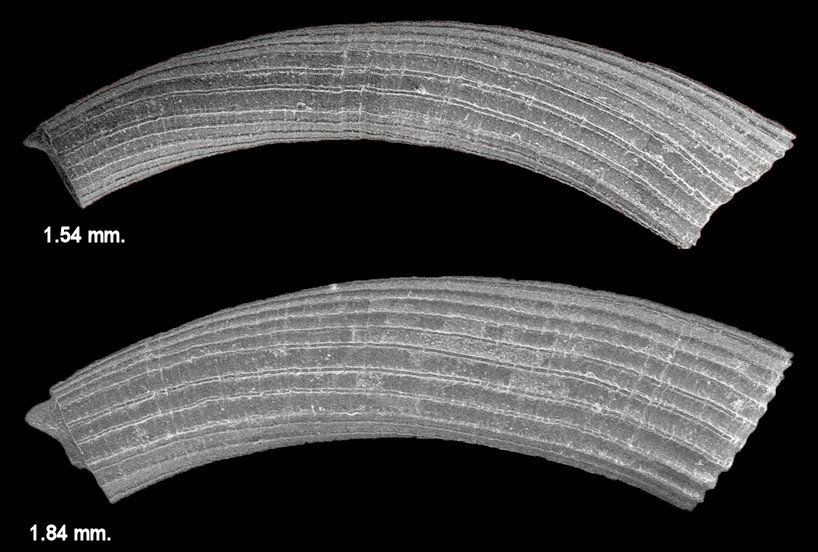| Caecum tortile Dall, 1892 Twisted Caecum |
| Scanning Electron Micrographs (SEM) Of Fossil Specimens |
 |
 |
 |
|
Lower Pinecrest beds, Upper Tamiami Formation, Sarasota County, Florida. SEMs produced in collaboration with Dr. Ann Heatherington, Dept. Geological Sciences, University of Florida, Gainesville, FL. |
|
Note the twisting of the longitudinal cords. Dall (1892: 301) drew his readers' attention to this character, which he thought was unique to this species, aptly applying the Latin Third Declension adjective tortilis, -e, meaning "twisted" to it. The twisting is most noted in earlier stages of the teleoconch growth. It becomes less apparent in more mature shells, which lose about three preceding stages by abscission, e.g., Caecum pulchellum Stimpson, 1851. After examining hundreds of specimens of caecids with longitudinal sculpture, we found that other species manifest the phenomenon, e.g., Caecum cycloferum de Folin, 1867, Caecum subspirale Carpenter, 1857, and that the axial rotation, when observed, was consistently dextral (clockwise) in all. Dall, W.H., 1892. Contributions to the Tertiary fauna of Florida with especial reference to the Miocene silex-beds of Tampa and the Pliocene beds of the Caloosahatchie River. Part 2. Streptodont and other gastropods, concluded. Transactions of the Wagner Free Institute 3(2): 201-473 + map + pls. 13-22. December. <http://biodiversitylibrary.org/page/31456875>. |